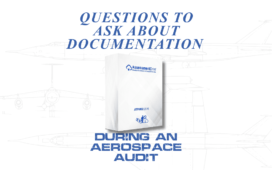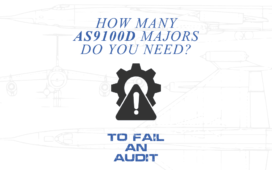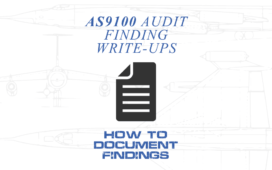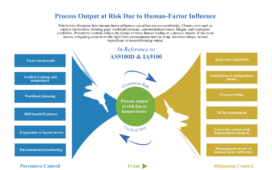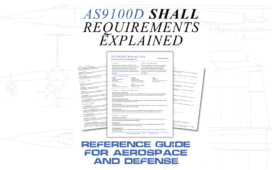Introduction: Why Risk Management Matters in AS9100
In the aerospace and defense industry, risk management is the backbone of safety, reliability, and compliance. The AS9100 Quality Management System places strong emphasis on identifying, assessing, and controlling risks at every stage of the product and service lifecycle.
From design and manufacturing to supplier management and maintenance, AS9100 risk management ensures organizations can anticipate problems before they occur, reduce failures, and maintain customer trust. This guide explores how risk is defined under AS9100, what clauses apply, and how organizations can implement an effective risk management framework.
What Is Risk Management in AS9100?
Risk management in AS9100 refers to the systematic process of identifying, evaluating, and controlling threats that could impact quality, safety, or customer satisfaction. Unlike ISO 9001, AS9100 introduces industry-specific requirements that focus on:
- Product safety throughout the lifecycle
- Counterfeit part prevention (Clause 8.1.4)
- Configuration management to avoid misapplication of parts
- Supplier risk control for critical components
- Operational risk planning to prevent process failures
The goal is to reduce uncertainty and ensure that aerospace products and services meet the highest standards.

AS9100 Clauses Related to Risk
Several key clauses within AS9100 directly address risk management:
Clause 6.1 – Actions to Address Risks and Opportunities
Organizations must identify risks and opportunities, then plan and integrate actions into the QMS.
Clause 8.1.1 – Operational Risk Management
Requires companies to establish, implement, and maintain a risk management process specific to operations, production, and service provision.
Clause 8.1.2 – Safety
Organizations must identify potential product safety hazards and develop controls to prevent or mitigate them.
Clause 8.1.4 – Prevention of Counterfeit Parts
Requires organizations to assess the risk of counterfeit parts entering the supply chain and implement preventative measures.
The Risk Management Process in AS9100
Risk management under AS9100 is not a one-time activity but a continuous cycle. A practical implementation often follows these steps:
- Risk Identification
- Brainstorm potential risks using FMEA, SWOT, or hazard analysis.
- Common risks: late supplier deliveries, design flaws, counterfeit parts, training gaps.
- Risk Assessment
- Evaluate likelihood and impact.
- Tools: Probability vs. impact matrix, Failure Modes and Effects Analysis (FMEA).
- Risk Mitigation
- Develop plans to eliminate or reduce risks.
- Example: Dual sourcing critical parts to avoid single-point failure.
- Risk Control & Monitoring
- Integrate into operational procedures.
- Use KPIs to track effectiveness.
- Continual Improvement
- Feed lessons learned back into processes.
- Audit and review risks regularly.
Examples of Risk Management in Aerospace
- Design Risk – Mitigated through rigorous verification and validation.
- Supplier Risk – Controlled with audits, scorecards, and approved vendor lists.
- Production Risk – Reduced by implementing process controls and preventive maintenance.
- Counterfeit Parts – Prevented with traceability, supplier vetting, and inspection.
- Customer Risk – Minimized through contract review, clear requirements, and effective communication.
Tools for Effective AS9100 Risk Management
Organizations often use structured tools to comply with AS9100’s risk requirements:
- FMEA (Failure Modes and Effects Analysis) – Identifies potential failures and prioritizes them.
- Risk Register – Centralized log of all risks, owners, and mitigation plans.
- Control Plans – Detailed documents specifying how risks are managed in production.
- Supplier Risk Scorecards – Evaluate vendor reliability and quality history.
Benefits of Strong Risk Management Under AS9100
Implementing effective risk management delivers measurable benefits:
- Fewer Nonconformities – Reduced audit findings and customer complaints.
- Lower Costs – Avoids rework, scrap, and warranty claims.
- Stronger Customer Trust – Demonstrates commitment to safety and reliability.
- Competitive Advantage – Preferred status in aerospace supply chains.
- Compliance Assurance – Meets AS9100 certification and regulatory expectations.
Best Practices for Risk Management
- Integrate Risk into Daily Operations – Don’t treat it as a checklist. Embed it in every process.
- Train Employees – Staff at all levels should understand risk awareness.
- Leverage Data – Use KPIs, audit results, and customer feedback to refine risk controls.
- Collaborate with Suppliers – Extend risk management beyond your walls.
- Review and Update Frequently – Risks evolve as technologies and supply chains change.
Future of Risk Management in Aerospace Standards
With the anticipated IA9100 update, risk management will become even more central to aerospace QMS requirements. Expect greater emphasis on:
- Cybersecurity risks
- Supply chain resiliency
- Sustainability and environmental risks
- Advanced manufacturing and AI-driven monitoring
Conclusion
AS9100 risk management is the foundation of quality, safety, and trust in aerospace. By proactively identifying, assessing, and controlling risks, organizations not only comply with certification requirements but also gain operational resilience and competitive advantage.
For suppliers aiming to thrive in today’s aerospace industry, mastering AS9100 risk management is not optional—it’s essential.
Learn more about AssessmentDrive® – a family of auditor-friendly compliance documentation.

Ronnie Lee Roberts II has worked in the Department of Defense (DoD) quality space since 2017, supporting programs at Patuxent River and Webster Field (NAWCAD/NAVAIR). He has worked as a certified AS9100:2016 Rev D Lead Auditor (2022-2025), ISO/IEC 20000-1:2018 Lead Auditor (TPECS [2023]), and a Certified CMMI® Associate (2025) with experience supporting CMMI-DEV Level 3 environments. His expertise spans technical writing, document control, CAD design, logistics management, and quality control. Ronnie specializes in inspecting to specification, ensuring contract compliance, and preparing teams for success in high-stakes, audit-ready environments.
AssessmentDrive® Early Access List
Sign up to be among the first to receive access to the AssessmentDrive® family of compliance products including Clause 8.1.4 Counterfeit Parts prevention (AS9100D/IA9100).
FAQs
Q: What does AS9100 require for risk management?
A: AS9100 requires organizations to identify, assess, and mitigate risks throughout operations, focusing on safety, counterfeit part prevention, and supplier quality.
Q: How is risk management different in AS9100 compared to ISO 9001?
A: AS9100 includes ISO 9001’s risk-based thinking but expands it with aerospace-specific clauses such as product safety, counterfeit parts, and operational risk management.
Q: What tools are used for AS9100 risk management?
A: Common tools include FMEA, risk registers, supplier audits, and control plans.



